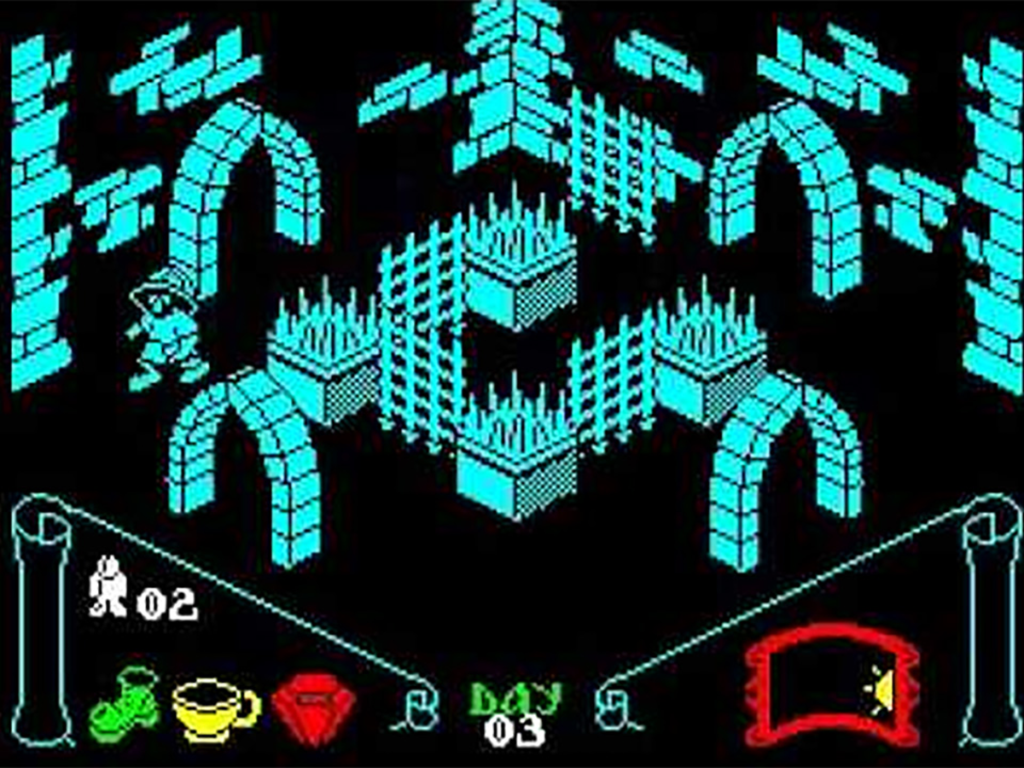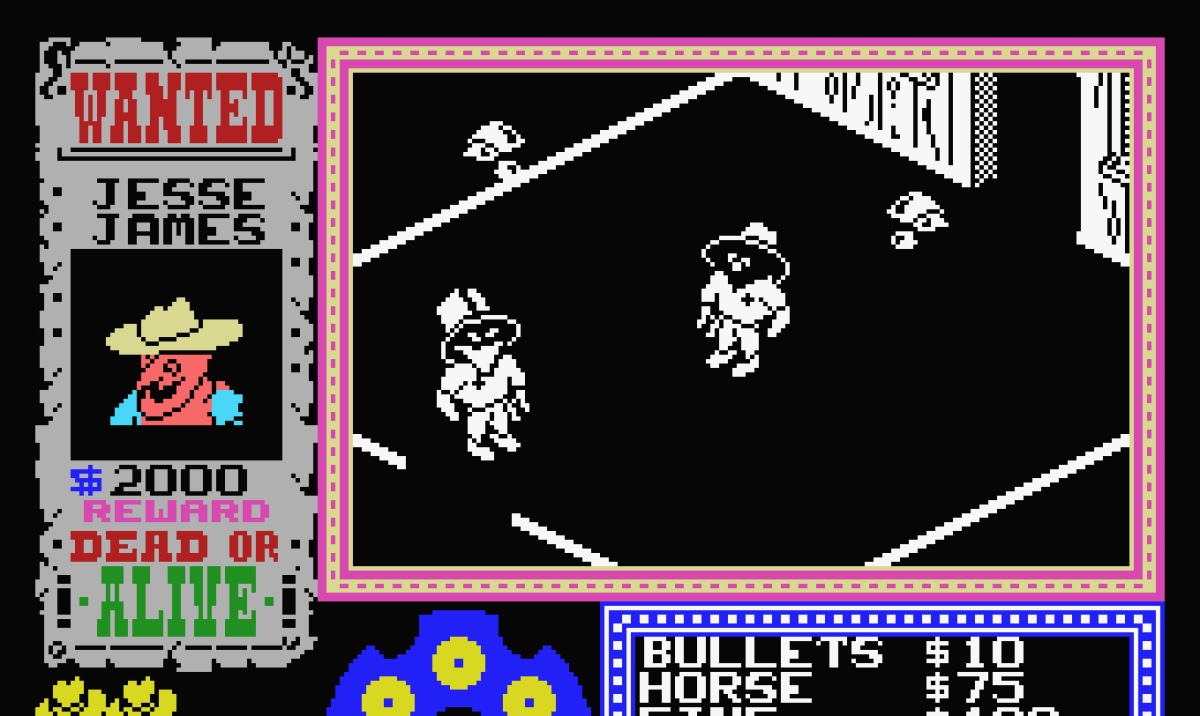In the annals of video game history, there are few developers as influential and iconic as Ultimate Play the Game. This British video game company, founded by Tim and Chris Stamper, left an indelible mark on the gaming world during the 1980s. Their games were a testament to innovation and quality during the golden age of 8-bit gaming.
1. Defining the Genre: Ultimate Play the Game and Their Key Features
Ultimate Play the Game was renowned for their pioneering work in the action-adventure genre, which was a significant departure from the simplistic gameplay of many early 8-bit games. Here are some key features that defined their games:
1.1. Isometric Graphics
One of the most distinctive features of Ultimate Play the Game’s titles was their use of isometric graphics. This graphical style allowed for a 3D-like perspective on a 2D plane, providing a level of depth and immersion that was revolutionary at the time. Games like “Knight Lore” and “Alien 8” showcased this isometric technique, setting a new standard for visual storytelling in video games.

1.2. Complex Puzzles
Ultimate Play the Game’s titles were not mere run-and-gun affairs; they demanded critical thinking and problem-solving skills from players. The inclusion of intricate puzzles within the games added depth and replayability, making each playthrough a unique and engaging experience.
1.3. Exploration and Open Worlds
Long before open-world games became a mainstream trend, Ultimate Play the Game was crafting expansive game worlds ripe for exploration. “Sabre Wulf” and “Underwurlde” featured vast interconnected environments that encouraged players to delve deep into the game’s lore and secrets.
1.4. Ambient Soundtracks
Ultimate Play the Game understood the importance of audio in gaming. Their titles featured atmospheric soundtracks that enhanced the overall experience, adding an extra layer of immersion to their games.
2. The History and Developments of Ultimate Play the Game
To fully appreciate the impact of Ultimate Play the Game, it’s essential to delve into their history and the developments that led to their meteoric rise in the gaming industry.
2.1. Humble Beginnings
Ultimate Play the Game, initially known as Ashby Computers & Graphics Ltd., was founded in 1982 by brothers Tim and Chris Stamper. The company’s early years were marked by the development of games for various 8-bit platforms like the ZX Spectrum and BBC Micro. Their first game, “Jetpac,” released in 1983, garnered attention for its engaging gameplay and polished graphics.
2.2. The Birth of the Ultimate Brand
In 1983, the Stamper brothers rebranded their company as Ultimate Play the Game, a name that would soon become synonymous with quality and innovation in the gaming industry. Under this new moniker, they released a string of critically acclaimed titles that showcased their commitment to pushing the boundaries of what 8-bit gaming could achieve.
2.3. Iconic Titles and Success
Ultimate Play the Game’s library of games reads like a who’s who of 8-bit classics. “Knight Lore,” released in 1984, is often cited as a landmark title, combining isometric graphics with challenging gameplay. “Alien 8” and “Sabre Wulf” followed, further solidifying Ultimate’s reputation for excellence.

Ultimate Play the Game, the precursor to Rare Ltd., developed a number of classic games during the 1980s for various 8-bit platforms like the ZX Spectrum and the Commodore 64. Here is a detailed list of all known Ultimate Play the Game titles:
- Jetpac (1983):
- A vertically scrolling shooter that was Ultimate’s first game. Players controlled a character who had to assemble and fuel a rocket while defending against hostile aliens.
- Lunar Jetman (1983):
- A sequel to “Jetpac,” this game featured lunar exploration and defense gameplay. Players controlled a character traversing the moon’s surface in a vehicle, defending against alien attacks.
- Atic Atac (1983):
- A top-down action-adventure game set in a haunted castle. Players had to explore the castle, find keys, and defeat monsters to escape.
- Sabre Wulf (1984):
- An isometric action-adventure game where players took on the role of Sabreman, tasked with collecting pieces of a lost amulet while navigating a jungle filled with dangerous creatures.
- Underwurlde (1984):
- Another isometric action-adventure game, this time set in a dark and foreboding underworld. Players guided Sabreman through a labyrinthine world to rescue imprisoned creatures.
- Knight Lore (1984):
- A groundbreaking isometric action-adventure game that introduced innovative real-time 3D graphics. Players controlled the character Sabreman, cursed to become a werewolf, as he tried to find a cure.
- Alien 8 (1985):
- An isometric puzzle-adventure game that tasked players with navigating a spaceship and protecting the crew from alien invaders. The game featured intricate puzzles and a strict time limit.
- Nightshade (1985):
- A text-based adventure game set in a dystopian future. Players assumed the role of Nightshade, a vigilante hero trying to save Metro City from crime.
- Gunfright (1985):
- A top-down shooter with a Wild West theme. Players took on the role of a sheriff tasked with capturing outlaws while avoiding innocent bystanders.
- Slalom (1986):
- A skiing game that challenged players to navigate downhill courses while avoiding obstacles and maintaining control of their skier.
- Pssst (1986):
- A maze-style action game where players controlled a plant defending itself from invading insects by spraying pesticide.
- Cookie (1983):
- A side-scrolling action game where players controlled a chef trying to catch falling ingredients to bake cookies.

Please note that this list comprises the games released by Ultimate Play the Game before their transition to Rare Ltd. in the late 1980s. After becoming Rare, the company developed games for platforms like the Nintendo Entertainment System (NES) and Super Nintendo Entertainment System (SNES), including iconic titles like the “Donkey Kong Country” series.
2.4. The Rare Transition
In the late 1980s, Ultimate Play the Game underwent a significant transformation. The company rebranded once more, this time as Rare Ltd. This transition marked a shift toward developing games for Nintendo’s platforms, including the immensely successful “Donkey Kong Country” series on the Super Nintendo.
2.5. Legacy and Influence
Ultimate Play the Game’s legacy lives on through Rare and the impact they’ve had on the gaming industry. Their innovative approach to game design, commitment to quality, and willingness to push the technical limits of the hardware laid the groundwork for future generations of game developers.
3. Influential Games and Features
Ultimate Play the Game’s influence can be seen in countless games that followed, both in terms of gameplay mechanics and design philosophy. Here are some notable examples:
3.1. “Solomon’s Key” (1986)
“Solomon’s Key” took inspiration from Ultimate’s puzzle-solving elements and added its unique twist. Players navigated a series of rooms, solving puzzles and creating or destroying blocks to progress. The game’s challenging gameplay and intricate level design made it a cult classic.
3.2. “Head Over Heels” (1987)
“Head Over Heels” paid homage to the isometric perspective introduced by Ultimate Play the Game. It featured two characters with distinct abilities, encouraging cooperative play and strategic thinking. The game’s blend of action and puzzle-solving set a template for future titles.
3.3. “Landstalker” (1992)
“Landstalker” for the Sega Genesis drew inspiration from Ultimate’s open-world design philosophy. Players explored an expansive 2D world, tackling puzzles and battling enemies. The game’s isometric perspective and emphasis on exploration owed a debt to Ultimate’s pioneering work.
3.4. “Fez” (2012)
“Fez,” developed by Polytron Corporation, embraced the isometric perspective and puzzle-solving elements that were hallmarks of Ultimate Play the Game’s titles. With its rotating 2D world, “Fez” offered a modern interpretation of the genre that had roots in the classics crafted by Ultimate.
3.5. “Minecraft” (2011)
While “Minecraft” is a vastly different game from Ultimate Play the Game’s titles, it shares a commitment to player-driven exploration and creativity. Like Ultimate’s games, “Minecraft” encourages players to carve their paths and stories within its blocky world, fostering a sense of adventure and discovery.
4. Ultimate Play the Game: A Timeless Legacy
The influence of Ultimate Play the Game on the gaming industry is undeniable. Their commitment to innovation, quality, and pushing the boundaries of 8-bit hardware set a high standard for game development. The isometric perspective, complex puzzles, and expansive game worlds introduced by Ultimate continue to inspire game designers today.
As we look back on the 8-bit era, it’s clear that Ultimate Play the Game played a pivotal role in shaping the landscape of video games. Their legacy endures not only in the titles they created but also in the countless games that have drawn inspiration from their groundbreaking work. From “Knight Lore” to “Donkey Kong Country” and beyond, Ultimate’s impact on gaming is truly immeasurable.

